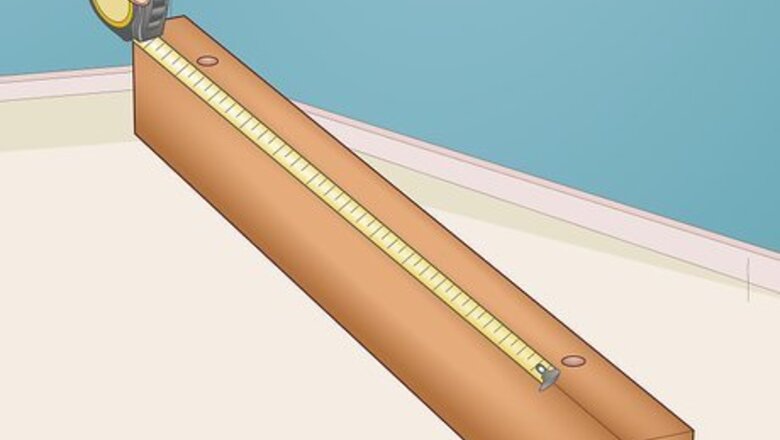
views
Finding the Studs
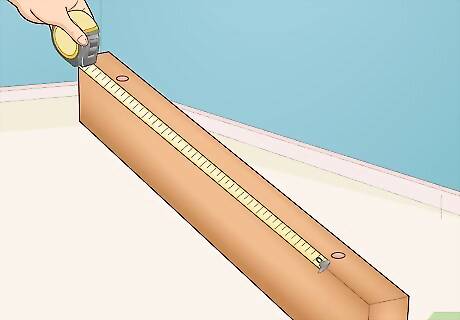
Measure the distance between the screw slots on your shelving. Unpack your shelf if it’s in a box and inspect the bottom of the shelf for screw holes where the brackets go. Use a measuring tape to calculate the distance between these brackets to find the gap between them. If there are multiple brackets, draw a simple diagram to keep track of the length between each piece. If you’re installing floating shelves, the screw slots run along the thin length on the back. You’re doing this to find the optimal way to install the shelf into studs. If you’re drilling into masonry, you don’t need to do this. All you have to do for brick walls is choose a portion of grout to drill into. If your wall is concrete, you can install the shelving anywhere.
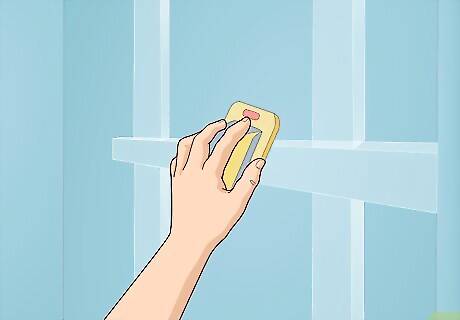
Use a stud finder to find studs where you can install the brackets. For heavy shelving, it’s much safer to install the shelves into studs. Go to the wall where you want to install your shelves. Hold the stud finder against the wall and turn it on. When it beeps or lights up, you found a stud. Mark this stud with a pencil mark. Continue marking the studs along the wall until you’ve found all of the studs on the section of the wall where you want to hang your shelf.Variation: If you don’t have a stud finder, you can knock on the wall with a knuckle. If there’s a stud, it will sound flat and hard. If there isn’t a stud, it will sound hollow and empty behind the wall. It’s much more efficient to use a stud finder, but you can do this if you don’t have any other options.
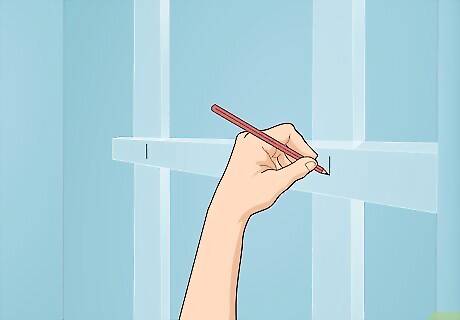
Mark the studs on the wall where you’re going to hang your shelf. Pull out your measuring tape to match the distance between the brackets on your shelving. Hold the tape against the wall and see if there’s a way to line each bracket up with studs. Once you find a way to install the shelves on studs, make larger hash marks on the specific studs where each bracket will go. Even if the shelf doesn’t sit exactly where you originally wanted it to, it’s always better to install brackets over studs. A few inches or centimeters is a small sacrifice for a perfectly mounted shelf.
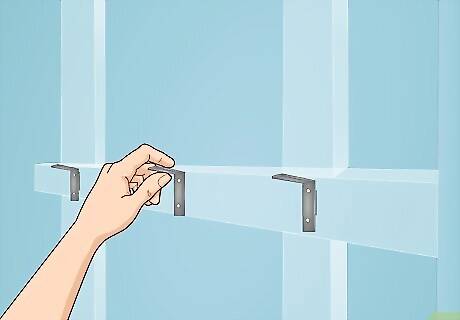
Line up the brackets with as many studs as you can if they don’t match perfectly. If you have more than 2 brackets on your shelves, try to line up the measuring tape in a way where the highest number of brackets will sit over studs. Studs are almost always spaced out in 16 in (41 cm) or 24 in (61 cm) intervals, so the brackets may not match the studs perfectly. If the distance between your brackets doesn’t line up with your stud pattern, install at least 1 of your brackets over a stud. If you have to choose between hanging a bracket on the end of the shelf on a stud and hanging a bracket in the middle on a stud, go with the bracket in the middle. Having a stronger anchor in the center of the shelf is always preferable.
Screwing in Your Wall Anchors
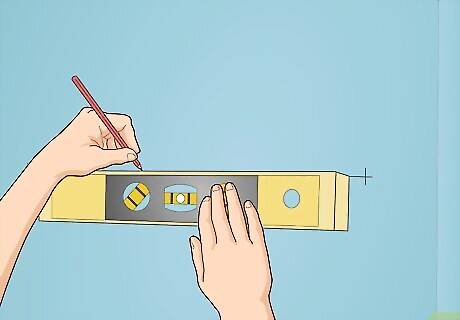
Use a level and measuring tape to place hash marks for your brackets. Grab a sprit level and hold it against the wall where you want the bottom of your shelves to rest. Starting on the stud where you made your bigger hash mark, put a pencil against the top of the level. Drag it along the level to the other hash mark to create a perfectly flat guideline. This will ensure that you install your shelving perfectly level. Make a small vertical mark under this guideline where the studs sit so your brackets line up perfectly with the guideline. You can erase the other hash marks you made to track your studs after you’re done marking your line.
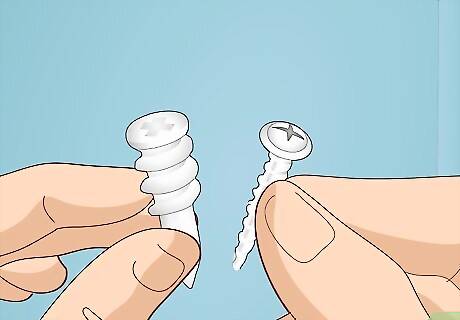
Pick up wall anchors that fit the screws for your shelving brackets. Take the screws that came with your shelving unit to a construction supply store. Choose a wall anchor based on the weight of the shelving and whether you’re drilling into a stud, hollow drywall, or masonry. Your wall anchor must match the size of the screw, so check the acceptable screw sizes on the packaging before you buy wall anchors. Choosing a Wall Anchor: Threaded drywall anchors look like screw-shaped pieces of plastic with threading on the outside. They generally hold 25–75 pounds (11–34 kg) and they’re perfect for studs. Expansion anchors will typically hold 25–55 pounds (11–25 kg). These look like bullet-shaped pieces of ridged plastic, and they’re ideal for hollow drywall and masonry. Toggle anchors can hold over 100 pounds (45 kg). They look like metal rods with an adjustable rod on the end. These are really only necessary if your shelving is extremely heavy and you’re drilling into hollow drywall or concrete.
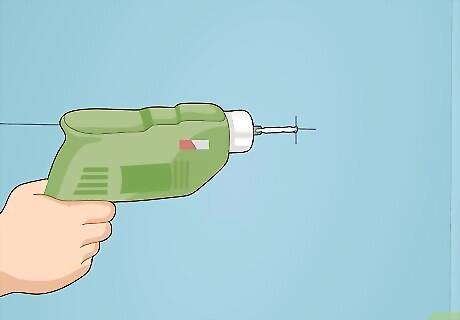
Drill pilot holes for your wall anchors into the wall over the hash marks. Grab a pilot hole bit that is slightly smaller than your wall anchor and insert it in your drill. Hold the bit perpendicular over one of your bigger hash marks, along the line that you drew. Bore a pilot hole where your first bracket will go. Repeat this process on the other end of your guideline where the second bracket goes. If you have more than 2 brackets, repeat this process for each bracket that you’re installing.

Screw a wall anchor into each pilot hole that you drilled. Use your level to double-check the pilot holes and make sure that your anchors will sit flush with one another. Then, use a screwdriver to screw your wall anchors into the slots you created with the pilot hole bit. Continue screwing the wall anchor into the wall until the opening of the anchor is flush with the wall where you’re installing it. If you’re installing anchors into concrete or masonry, you may need to use a drill to get the anchor in. If you do, keep the drill on the lowest power setting. The perpendicular piece at the end of toggle anchors needs to be flat against the screw to be inserted. You can typically just squeeze this piece against the screw threads and insert it this way.
Installing Your Shelf
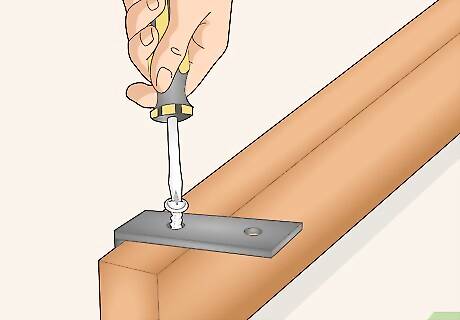
Install the brackets on your shelf if the instructions say to do this first. Some shelves are designed to be installed with the brackets on the shelf. Do this if your instruction manual says you should attach the brackets to the shelf first. Line up each bracket with the screw slots on the back of the shelf. Orient the brackets so that the piece of the L-shaped bracket that sticks out is flush with the back of the shelf. Drill or screw each bracket into place. Enlist a friend to hold the shelf for you while you attach it to the wall.
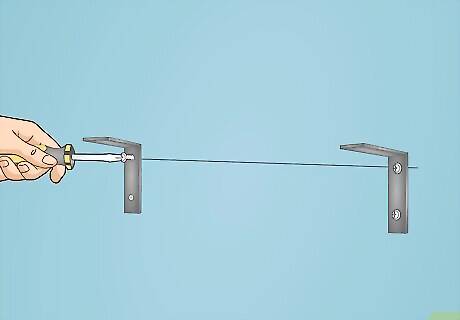
Screw your brackets into the wall anchors with your screws. Slide a screw through the slot on the bracket and drill or screw it into to the wall with the L-shaped platform sticking out the top of the bracket. Drill or screw each bracket the same way so that the platforms line up on your wall.Tip: You don’t need to tighten the screws all the way—you need to make sure your brackets line up perfectly before tightening them. For floating shelves, the brackets will look like pegs, not L-shaped metal pieces. Some floating shelves rely on the screws alone to hang on the wall, but these versions are rarely heavier than 5 pounds (2.3 kg).

Place your shelf on top of the brackets tighten them. Take your shelf and place it on top of the brackets. Check each bracket where it meets your shelf to make sure that they’re flush against one another. Once you know the brackets are sitting perfectly, tighten them into your wall to ensure that they don’t come loose in the future. This is especially important for shelves that weigh more than 30 pounds (14 kg).

Attach your shelf to the brackets with your remaining screws. Hold your shelf on top of the brackets and line the screw slots on the shelf up with the screw slots on your brackets. Drill screws through the slot on the bracket and into the shelf. Repeat this process for every bracket that you use to finish installing the shelf. Try pulling down gently on the shelf to ensure that it’s firmly installed on your wall. If your shelf’s instruction manual says not to use a drill for this part of the process, use a screwdriver. Floating shelves typically slide into the bracket sticking out of the wall. Slide the openings on the back of the shelf over the pegs and push the shelf into place.


















Comments
0 comment